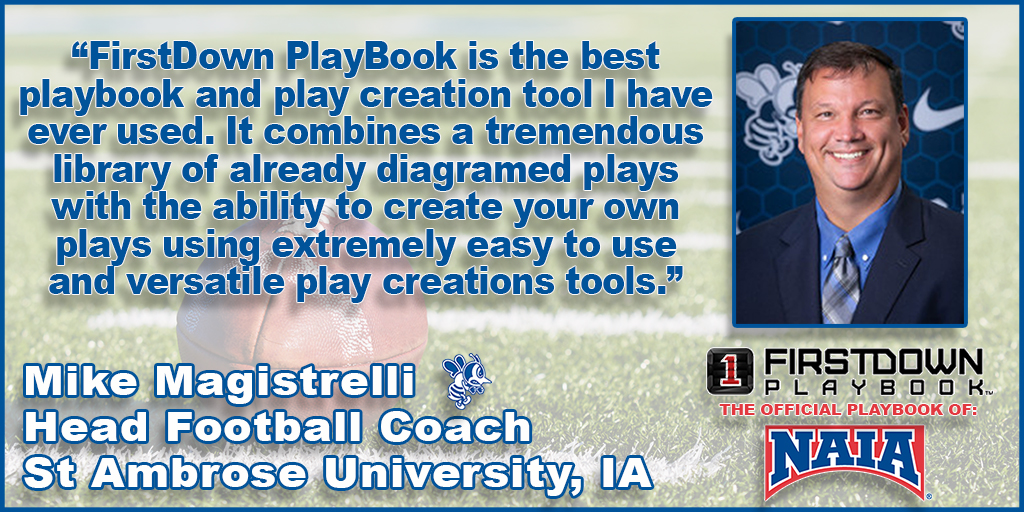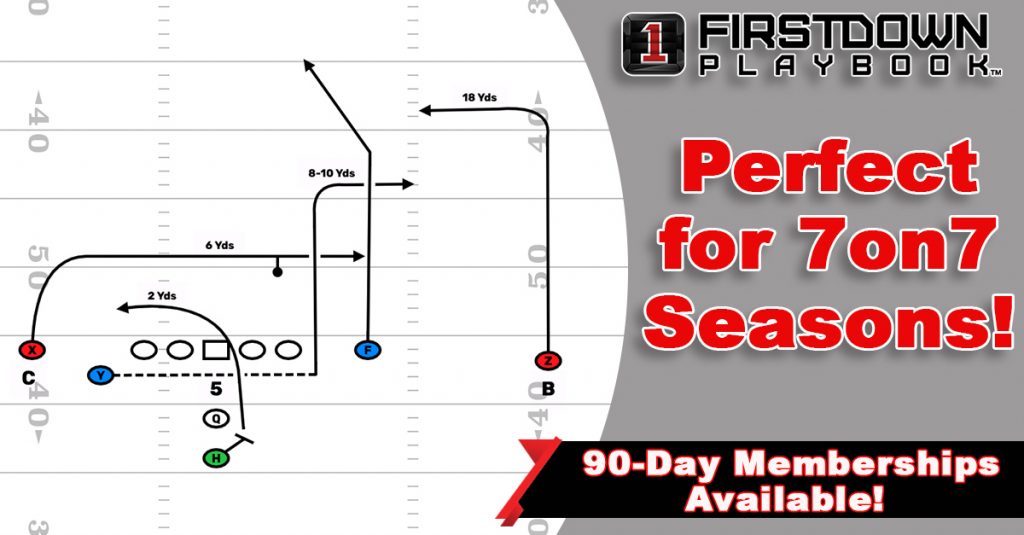Use 7on7 To Teach Receiver Speed Cuts
This is the time of year when everything that gets taught in football happens without pads. you have to be careful because bad habits can get taught just as easily as good ones. As you get into the thick of your 7on7 season, teaching receiver speed cuts should be on your checklist.
The general public normally does not understand this. This is why you need to be careful who is coaching your 7on7 team. If you are not careful your young receiver will be running robotic routes. This will take away all of their athletic ability and even speed.
Defensive secondary coaches are great at teaching their defensive backs how to read the body language of receivers. Defensive Backs are taught to read the take off and the pad level of the receiver. Young receivers will release differently on a hitch vs a go route if you are not careful.
New!! Improved PlayBook Area! Take A Free Trial Here!
They are also taught to read how the receiver chops his feet as he comes out of his break at the top of his route. Coaching receivers how to run out of a break is essential if he is to get any separation on his route. This is important vs man or zone coverage.
Attack The Defense With FDPB “Coverage Beaters”
The defensive back is looking for the receiver to chop his feet at the top of his route and to stick his foot in the ground away from the break. Normally the defensive can make up a lot of closing time on the route by keying this alone. For this reason most receiver coaches teach a speed cut.
When using a speed cut the receiver will run out of his break instead of chopping his feet. He will begin the break off of his foot to the side of the break. The break becomes a smooth three step break that allows the receiver to never slow down.
Ingredients For Teaching Receiver Speed Cuts
1. The receiver should attempt to keep his stride length the same throughout the route and break.
2. The receiver should maintain his speed throughout the break. The fact that he is maintaining his stride length should help with this.
3. The receiver should maintain body language that says he is going vertical up until he begins to run out of his break. This includes eyes up the field, pads and hips down with speed that threatens the coverage.
4. The receiver will begin the break slightly sooner than he normally would because it is impossible to initially break at 90 degrees using this technique. The break side hip and shoulder will dip slightly as the receiver begins his first step.
5. Finally and most importantly, the receiver must get back to 90 degrees or even negative back to the quarterback as soon as he can. The natural tendency is for the receiver to allow his momentum to carry his route away from the quarterback. This is a natural recipe for an interception as it allows the defender to undercut the route.

